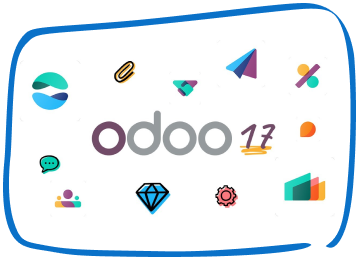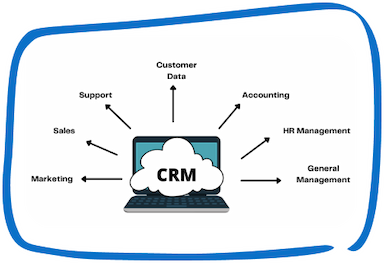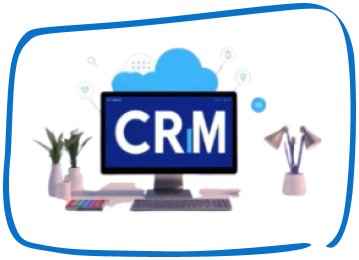Talent management software
An integrated software platform, known as a talent management system (TMS), supports various key talent management operations. These operations include recruitment, employee onboarding, performance management, learning and professional development, pay management, and succession planning. TMS is also known as HRMS Software solution. The technical tools needed to support these operations are usually provided in the form of software modules. Thus, companies can begin with the necessities and add more features as they expand.
Most significantly, an organization can connect its business strategy and human resource planning with a TMS. This ensures that the company proactively takes steps to provide the talent needed to support its present and future objectives.
Transform HR with Our HRMS Demo
Simplify and automate your HR operations with our advanced HRMS software. Schedule a free demo and experience seamless payroll, attendance, and employee management.
The modules of talent management
Although there have historically been pillars, or modules, of talent management software, several vendors and experts now refer to talent management as having five pillars. Talent management systems comprise programs that fit into one of the following main functional areas, regardless of the quantity or titles assigned to them. Depending on the talent management systems vendor, the fundamentals are the same, but the names and number of modules vary:
- hiring as well as onboarding
- Learning and development
- management of performance
- Payroll administration
- Planning for succession
The market for talent management systems
The market for talent management software is enormous. Based on component, deployment, organizational size, and vertical, it has been divided into segments. On-premise and cloud-based systems make up the deployment category, with the latter likely to see quicker growth in demand.
The talent management process comprises various vendors and solutions. Continuous innovation results in new and creative features. By 2023, analysts project that the market for talent management software will be worth approximately 16 billion USD. The market is expected to experience a growth rate of about two percent every four years, showcasing the dynamic nature of the market.
How does talent management software operate?
Since most TMSs are cloud-based, they include a range of tools and modules for storing, protecting, and tracking employee data that supports their growth, effectiveness, and happiness. Tasks carried out by HRMS Software include the following:
- Planning: It guarantees that talent management tactics correspond with long-term corporate objectives.
- Recruiting: It sources worldwide prospects, nurtures them, and keeps them engaged throughout.
- Onboarding: By automating the on-, off-, and cross-boarding operations, it increases employee productivity through a paperless approach.
- Managing: It directs the creation of action plans for workers’ ongoing development and productivity.
- Designing: It organizes and creates the ideal compensation plan to recognize and honor the company’s top achievers.
- Retaining: It gives staff members a cutting-edge, interesting learning environment.
The Talent Management System’s advantages
There are several benefits that a talent management system (TMS) can offer to businesses of all sizes. Let’s examine a few of the main benefits:
1) Simplified Hiring Process
By automating processes like job posting, candidate screening, interview scheduling, and application monitoring, HRMS software expedites the hiring process.
This makes hiring easier, reduces administrative work, and improves an organization’s ability to draw in and choose top personnel.
2) Encourage Staff Development
Employers may identify skill gaps and provide staff with specialized training and development opportunities thanks to the Talent Management Platform.
Creating individualized development programs may encourage valuable employees to advance within the organization, cultivate prospects, and improve employee engagement.
3) Put leadership development and succession planning into practice
A System of Talent Management for Effective Succession Planning
The talent management tool assists in identifying high-potential personnel and preparing them for leadership positions in the future.
By using succession planning techniques, organizations may reduce the risks associated with important workers departing, ensure a seamless leadership transfer, and create a strong talent pipeline.
4) Improved Management of Performance
The system offers goal-setting features and performance evaluation tools.
Thus, it facilitates the conduct of performance evaluations, timely feedback delivery, effective progress tracking, and alignment of employee goals with organizational objectives.
Establishing clear guidelines and giving frequent feedback are two ways that businesses can increase worker productivity.
5) Enhanced Retention and Engagement of Staff
Talent Management Software provides channels for regular contact, recognition, and rewards.
This leads to high levels of job satisfaction and retention, enhances employee engagement, and creates a positive work environment.
The Bottom Line
Any company must take into account its unique needs and objectives.
They must also look for a talent management system that supports their strategic goals and offers features like learning, development, employee engagement, performance tracking and management, and succession planning—all of which are necessary for efficient people management.
Get Your Custom HRMS Solution Today
Empower your workforce with a tailored HRMS solution that fits your organization’s unique needs. Request a personalized quote now.
Additionally, businesses need to consider factors like cost-effectiveness, data security and compliance, vendor support, reputation, customization, and compliance when choosing the best talent management software.
Contact Penieltech for a strong HRMS Software solution and book a free demo!
Speak with Our Team!
4.9 Stars
1k+ reviews on






